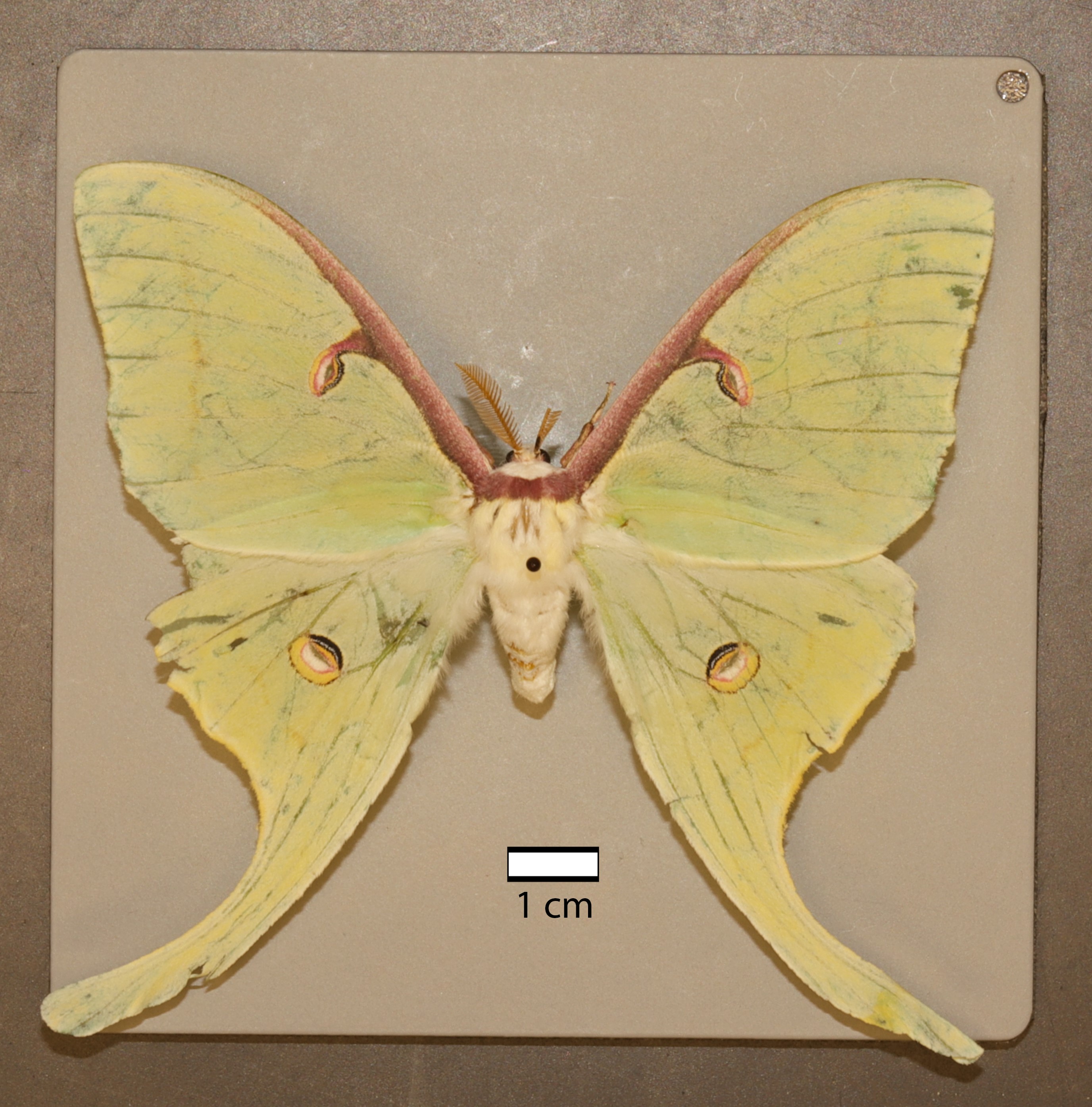|
Actias Truncatipennis
''Actias truncatipennis'' is an uncommon moth of the family Saturniidae that is found in Mexico. The species was first described by Léon Sonthonnax in 1899. It resembles the Luna moth but is considerably larger. References Moths described in 1899 Truncatipennis Moths of Central America {{Saturniidae-stub ... [...More Info...] [...Related Items...] OR: [Wikipedia] [Google] [Baidu] |
Moth
Moths are a paraphyletic group of insects that includes all members of the order Lepidoptera that are not butterflies, with moths making up the vast majority of the order. There are thought to be approximately 160,000 species of moth, many of which have yet to be described. Most species of moth are nocturnal, but there are also crepuscular and diurnal species. Differences between butterflies and moths While the butterflies form a monophyletic group, the moths, comprising the rest of the Lepidoptera, do not. Many attempts have been made to group the superfamilies of the Lepidoptera into natural groups, most of which fail because one of the two groups is not monophyletic: Microlepidoptera and Macrolepidoptera, Heterocera and Rhopalocera, Jugatae and Frenatae, Monotrysia and Ditrysia.Scoble, MJ 1995. The Lepidoptera: Form, function and diversity. Oxford, UK: Oxford University Press; 404 p. Although the rules for distinguishing moths from butterflies are not well establishe ... [...More Info...] [...Related Items...] OR: [Wikipedia] [Google] [Baidu] |
Saturniidae
Saturniidae, commonly known as saturniids, is a family of Lepidoptera with an estimated 2,300 described species. The family contains some of the largest species of moths in the world. Notable members include the emperor moths, royal moths, and giant silk moths. Adults are characterized by large, lobed wings, heavy bodies covered in hair-like scales, and reduced mouthparts. They lack a frenulum, but the hindwings overlap the forewings to produce the effect of an unbroken wing surface.Tuskes PM, Tuttle JP, Collins MM (1996)''The Wild Silk Moths of North America: A Natural History of the Saturniidae of the United States and Canada''. Pages 182-184.Cornell University Press, Ithaca, New York. Saturniids are sometimes brightly colored and often have translucent eyespots or "windows" on their wings. Sexual dimorphism varies by species, but males can generally be distinguished by their larger, broader antennae. Most adults possess wingspans between 1-6 in (2.5–15 cm), but so ... [...More Info...] [...Related Items...] OR: [Wikipedia] [Google] [Baidu] |
Mexico
Mexico (Spanish: México), officially the United Mexican States, is a country in the southern portion of North America. It is bordered to the north by the United States; to the south and west by the Pacific Ocean; to the southeast by Guatemala, Belize, and the Caribbean Sea; and to the east by the Gulf of Mexico. Mexico covers ,Mexico ''''. . making it the world's 13th-largest country by are ... [...More Info...] [...Related Items...] OR: [Wikipedia] [Google] [Baidu] |
Luna Moth
The Luna moth (''Actias luna'') also known as the American moon moth is a Nearctic moth in the family Saturniidae, subfamily Saturniinae, a group commonly known as giant silk moths. It has lime-green colored wings and a white body. The larvae (caterpillars) are also green. Typically, it has a wingspan of roughly , but can exceed , making it one of the larger moths in North America. Across Canada, it has one generation per year, with the winged adults appearing in late May or early June, whereas farther south it will have two or even three generations per year, the first appearance as early as March in southern parts of the United States. As defense mechanisms, larvae emit clicks as a warning and can also regurgitate intestinal contents, confirmed as having a deterrent effect on a variety of predators. The elongated tails of the hindwings are thought to confuse the echolocation detection used by predatory bats. A parasitoid fly deliberately introduced to North America to be a b ... [...More Info...] [...Related Items...] OR: [Wikipedia] [Google] [Baidu] |
Moths Described In 1899
Moths are a paraphyletic group of insects that includes all members of the order Lepidoptera that are not butterflies, with moths making up the vast majority of the order. There are thought to be approximately 160,000 species of moth, many of which have yet to be described. Most species of moth are nocturnal, but there are also crepuscular and diurnal species. Differences between butterflies and moths While the butterflies form a monophyletic group, the moths, comprising the rest of the Lepidoptera, do not. Many attempts have been made to group the superfamilies of the Lepidoptera into natural groups, most of which fail because one of the two groups is not monophyletic: Microlepidoptera and Macrolepidoptera, Heterocera and Rhopalocera, Jugatae and Frenatae, Monotrysia and Ditrysia.Scoble, MJ 1995. The Lepidoptera: Form, function and diversity. Oxford, UK: Oxford University Press; 404 p. Although the rules for distinguishing moths from butterflies are not well establishe ... [...More Info...] [...Related Items...] OR: [Wikipedia] [Google] [Baidu] |
Actias
''Actias'' is a genus of Saturniid moths, which contains the Asian-American moon moths. Long tails on their hindwings are among their distinctive traits. Other moths with similar appearance are ''Copiopteryx'', '' Argema'' and '' Eudaemonia''. The majority of species in this genus feed on the leaves of sweetgum, pine, or similar trees. As with all Saturniids, adult ''Actias'' moths lack functional mouthparts so their lifespan after emergence from the cocoon only ranges from a few days to a week. Species The genus includes the following species: *'' Actias aliena'' (Butler, 1879) *'' Actias angulocaudata'' Naumann & Bouyer, 1998 *'' Actias apollo'' Röber, 1923 *'' Actias artemis'' ( Bremer & Gray, 1853) *'' Actias arianeae'' (Brechlin, 2007) *'' Actias australovietnama'' Brechlin, 2000 *'' Actias brevijuxta'' Nässig & Treadaway, 1997 *'' Actias callandra'' Jordan, 1911 – Andaman moon moth *'' Actias chapae'' Mell, 1950 *''Actias chrisbrechlinae'' (Brechlin, 2007) *''Act ... [...More Info...] [...Related Items...] OR: [Wikipedia] [Google] [Baidu] |



